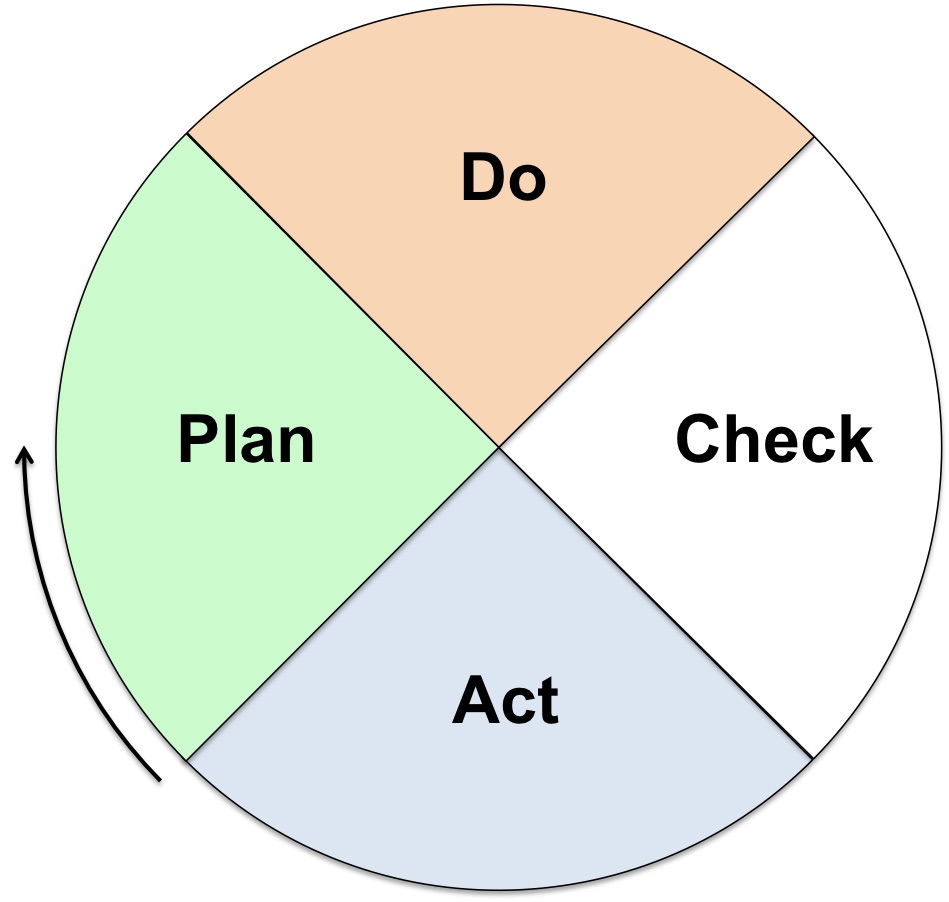I’m a huge fan of the plan-do-check-act (PDCA) cycle. It was originally intended for process improvement within manufacturing but I now see it everywhere. But, being an Agile kind of guy I wish Deming had put “Reflect” and “Improve” into the name.
PDCA – the short history
PDCA is an iterative four-step method for the control and continuous improvement of processes and products. PDCA evolved out of Walter A. Shewhart’s thinking on scientific method and inference. Dr W. Edwards Deming developed some of Shewhart’s ideas and the PDCA was born, although Deming honoured his predecessor by calling his synthesis the “Shewhart cycle”. PDCA is also known as the “Deming circle/cycle/wheel”, “control circle/cycle”, and plan–do–study–act (PDSA). Later in his career, Deming swapped “Check” for “Study”to emphasise analysis over inspection, and the cycle became “Plan, Do, Study, Act” (PDSA).
PDCA – the four steps
Plan: Identify the expected output and the processes necessary to deliver these results.
Do: Implement the plan, execute the process, and/or make the product. Meanwhile collect the actual data you’ll need for in the “Check”.
Check: Compare the expected results identified in “Plan” with the actual results collected in “Do”. Look for deviation in any of the plan, implementation and/or product.
Act: Request corrective action to address significant deviations highlighted in “Check”.
Modifying the PDCA for reflection and improvement
I’ve seen a similarity between the HeartOfAgile and PDCA. I like the Heart of Agile because it includes the words “Reflect” and “Improvement” making those aspects of the model explicit. PDCA, using those words instead of Check and Act, becomes Plan Do Reflect Improve.


Hi Steven,
fwiw – Somewhere on my journey I read that ‘Plan Do Check Act’ is actually a mis-translation of the Japanese description of Deming’s work. It would be more accurate to say ‘Plan Do Study Adjust’, and that is the version I’ve been using ever since when introducing the concept.
Regards
Mike
I’m much happier with ‘Plan Do Study Adjust’
Hey Steven,
This plays right into my comment on your last post. Why sprints? Thoughts? What does your feedback loop like?
I love “Plan Do Study Adjust”. Very cool!
Sprints provide a cadence for improvement. Without sprints teams have to find cadence that works for them. My experience is that improvement happens continuously, just like delivery, however a regular heartbeat of retrospectives is beneficial. Perhaps on a 2 weekly schedule … just like a Scrum team might do. 🙂